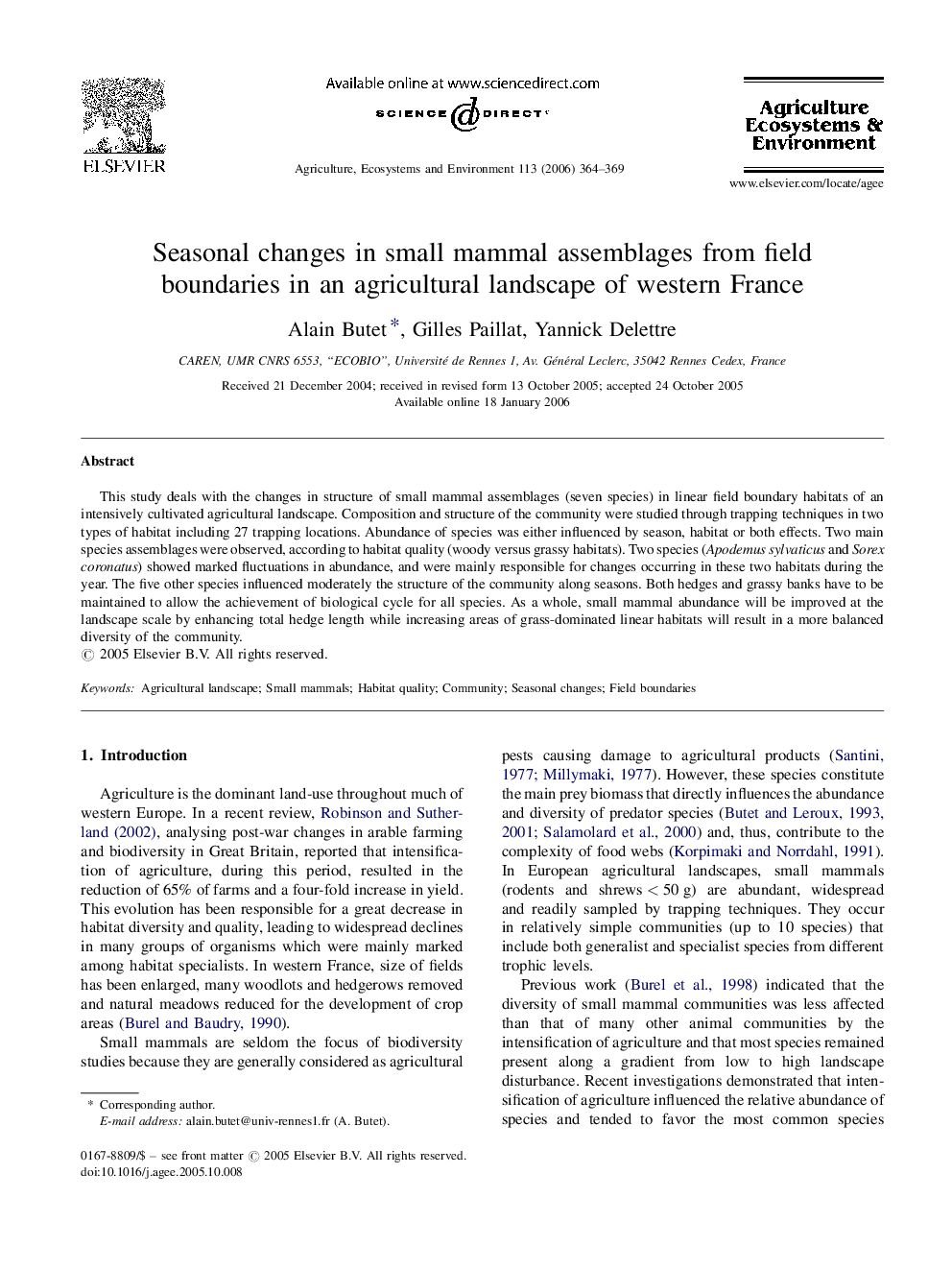| Article ID | Journal | Published Year | Pages | File Type |
|---|---|---|---|---|
| 2415988 | Agriculture, Ecosystems & Environment | 2006 | 6 Pages |
This study deals with the changes in structure of small mammal assemblages (seven species) in linear field boundary habitats of an intensively cultivated agricultural landscape. Composition and structure of the community were studied through trapping techniques in two types of habitat including 27 trapping locations. Abundance of species was either influenced by season, habitat or both effects. Two main species assemblages were observed, according to habitat quality (woody versus grassy habitats). Two species (Apodemus sylvaticus and Sorex coronatus) showed marked fluctuations in abundance, and were mainly responsible for changes occurring in these two habitats during the year. The five other species influenced moderately the structure of the community along seasons. Both hedges and grassy banks have to be maintained to allow the achievement of biological cycle for all species. As a whole, small mammal abundance will be improved at the landscape scale by enhancing total hedge length while increasing areas of grass-dominated linear habitats will result in a more balanced diversity of the community.
